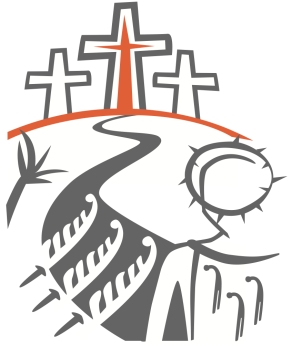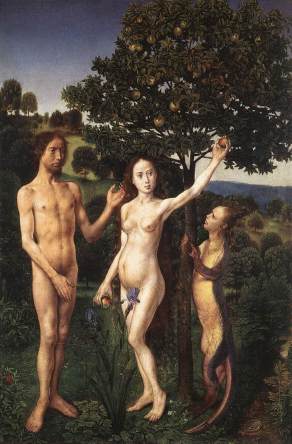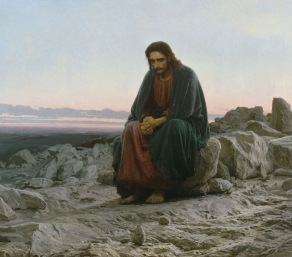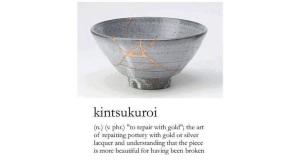Sunday 21st February 2016 Lent 2C
Luke 13:31-35
Oh Jerusalem! : Jesus’ cry for the world God would gather in….
I don’t know whether you’ve ever found yourself in the centre of an intrigue. Perhaps that’s not an unusual occurrence for you. Having to read a situation, wonder what is really going on – what people’s ulterior motives are – what the end game is? I think todays pericope starts out a bit like this.
A warning comes from some Pharisees about King Herod Antipas’ murderous intent. Jesus is in danger. But how much danger? And why now? And why are the Pharisees, who are working in cahoots with the Roman authorities to keep the populace under control, coming to warn Jesus?
Herod Antipas had killed John the Baptist. It is very believable that he also wanted to remove Jesus. Why? The eastern flank of the Roman empire was unstable. When you are trying to maintain stability and security, the last thing you want is popular movements critical of government. If you are running the temple and trying to sustain a balance between Roman demands and your commitment to the survival of Israel and its faith, then you also do not want people from ‘left field’. Military revolutionaries are more easily categorised. People like John and Jesus brought unrest.[1]
Jesus is in danger. He has a choice here. He could disappear quietly. Go about what he’s doing, healing the sick, casting out demons, but try to do so without arousing the anger of the Synagogue officials and the Romans. However, nothing will deter Jesus from the course he is set on – not even the threat of murder. Instead, Jesus calls Herod a “fox” – a wily animal, known for its cunning and its indiscriminate destruction of any small animal that comes in its way. And then goes on to make a prophetic statement about who he, Jesus is – and something about his Father, and the Father’s relationship to the people.
Speaking in the persona of divine Wisdom and anticipating his later weeping over the city ( Lk19:41-44) Jesus begins a prophetic lament.
Michael spoke earlier about the lament tradition in the Hebrew Scriptures and New Testament. (…..) There are lots of examples of lament – the book of Lamentations, Job, Jonah, Jeremiah and others. What I think makes this different is that here it’s Jesus who is lamenting – these are God’s words from God’s mouth – not simply through a human prophet. This is God’s lament about the way God’s people are being unfaithful to God. The way they reject him.
On the face of it, this might not seem different from the relational cycle that plays out throughout the Hebrew Scriptures: God enters into a covenant relationship with the people. The people turn away from God, and act unfaithfully. Things go badly for the people. A prophet laments the faithlessness of the people and calls them back into relationship with God. The people repent and come back to God. And the cycle begins again. And Again.
But something different is being foreshadowed here. This is God’s son speaking. In this lament over Jerusalem, “the city that kills the prophets and stones those who are sent to it” Jesus is suggesting that the outcome will be very different. Not the endless cycle of the History of the Israelites – but a one off event when God will draw all of God’s creation back to God’s self.
How is this going to happen? In one of the most beautiful images of the New Testament, Jesus describes God as a hen, gathering up her chicks under her wing. It’s a beautiful maternal image of God.
Episcopalian priest and writer Barbara Brown Taylor tells a beautiful story about buying an orphaned guinea chick. It needed a foster mother hen if it was to survive. Taylor bought a Blue Silkie hen, brought it home, and set it down outside the pen that held the guinea chick. She watched them watching each other. Then she put the hen in the pen with the chick. She writes:
“Both [the hen] and the baby froze. The baby cheeped. The hen did not move a feather. The baby cheeped again. The hen stayed right where she was. The baby took a few steps toward her. I held my breath. The grey hen lifted her wings. The baby scooted right into that open door. When I checked on them an hour later, all I could see was a little guinea chick head poking out from under that grey hen’s wing.”[2]
How does Jesus foreshadow Jerusalem will respond?
As Jesus points out, Jerusalem’s tendency has always been to reject with violence the emissaries (Prophets) sent to it by God – even though the divine intent was ever benign: simply longing to bring all of creation back into relationship with the one who made it. As benign in fact as the action of a hen gathering a brood of chicks under her wings in fact.
Barbara Brown Taylor continues: “But the context is anything but sweet. Some Pharisees have come to Jesus and told him, “You had better get out of here. Herod wants to kill you.” I don’t think that they cared one bit about Jesus’ welfare. It is pretty clear that they were trying to scare him off, to get this troublemaker to leave town.
And if he had had concern about saving his skin, Jesus would have left town. Herod Antipas was not quite as ruthless as his father Herod the Great, the one who killed all the children in Bethlehem, but he was close. If anyone even appeared to threaten his power, Herod quickly executed them. Jesus called him a fox, who is both wily and cruel and will kill just for the sake of killing.”
There is such beautiful vulnerability in the image of a mother hen raising her wings so that her chicks can cuddle in and seek sanctuary beneath them. Because in the raising of her wings, and the raising up of herself (RAISE ARMS – RISE UP ONTO TOES) the hen makes her breast bone – and her beating heart beneath vulnerable to attack. Likewise Jesus. The only way for Christ to complete his role as savior to creation is for Christ to be raised up. Arms spread wide. Vulnerable unto death – death on a cross.
The language of the “three days” also shows us the path that Jesus is choosing here. He’s not just denoting to a short amount of time, but pointing to Easter: his death and resurrection that happened in “three days.” Pointing again to the incredibly vulnerable open armed action of God – seeking to draw all of creation back to God.
And again – how will Jerusalem respond? Will they run to the hen and nestle beneath her protective wings – re entering a relationship with the creator? Jesus in a final prophetic statement again forshadows that this will not be the case. It’s not a condemnatory or threatening statement but simply and tragically alluding to what will happen (or what for the first readers of the gospel had already happened): Jerusalem’s house will be left desolate. It’s an allusion to the destruction of the temple in 70n CE. For despite God’s incredibly extravagant outpouring of love in the cross and in raising Jesus from the dead not all of creation will turn back to God.
So where does this leave us? It seems to me that there are many things in our world today that God might lament. Ways in which the brokenness of the world harms and degrades people. And God, as ever, seeks to draw these things up into God’s self as a hen draws the chicks in.
At the end of today’s service we are going to invite you to respond to two such places of brokenness and despair. You will have the choice whether you would like to respond or not – remember that Cross Gen is a community of people who see and understand the world differently – so if you are uncomfortable in any way with what we are suggesting I encourage you to not join in – that is your right and we will respect that.
Here are two situations that are taking up enormous amounts of media attention right now that I personally believe cause God to weep, just as Jesus did over Jerusalem:
1) As you know we are in the middle of a 4 year Royal Commission in to Institutional Child abuse. Whilst it is true that abuse has happened in many organisations that have cared for children, including orphanages and schools run by the churches that preceded the formation of the Uniting Church, there is much attention on the systemic abuse of children by catholic priests. Next week the Royal Commission will hear further evidence into the horrendous abuse that took place in Ballarat. Cardinal George Pell, the most senior cleric Australia has had will be called to give account of what he knew about the abuse of children, and what if anything he did about it.
I do not wish to comment on the work of the commission, or the evidence the Cardinal will bring. I simply wish us to join in an action that has begin in Ballarat and has spread internationally. It is called a LOUD FENCE – the simple tying of ribbons to a fence to bear witness and stand in solidarity with those who were abused as children – and so say that we as a community will no longer stay silent. We will listen to children. And we will act to keep them safe.
At the end of the service you will be invited to go outside and tie a ribbon to our fence – creating a LOUD Fence to declare that we stand in solidarity with victims of abuse and will no longer be silent about abuse where it occurs. Photographs of the fence will be posted to Facebook along with images of other LOUD fences around the world.
We can provide more information about this later so as to help you understand what this action is about.
The second action is to declare our solidarity with the #sanctuary movement. As you may know, the government is seeking to return 267 people who are currently seeking asylum in Australia to detention on Manus and Nauru. This includes a number of Children and babies. You may have seen last night a vigil to stop the removal of one of the babies from hospital where she is receiving care. You may have also seen that a number of churches, including Uniting Churches are offering sanctuary to families should that become necessary. This morning Mountview, where Brendan is Minister declared that they are a church that are prepared to offer sanctuary. Our network has also been part of a discussion about this – and while we have not yet made a decision about whether this is something we can or will actively participate in – we can declare that we are in solidarity with those churches that can offer sanctuary – and offer them our prayerful support.
The children are doing some work on this and making a sign – we will take a photograph of us with the signs outside our building as a display of solidarity.
[1] First Thoughts on the Lectionary, Bill Loader, Lent 2C http://www.staff.murdoch.edu.au/~loader/LkLent2.htm
[2] Barbara Brown Taylor, “Barnyard Behavior, “The Christian Century, September 19, 2006 http://www.christiancentury.org/article/2006-09/barnyard-behavior

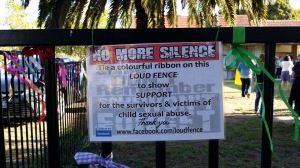
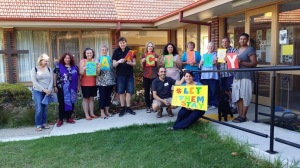
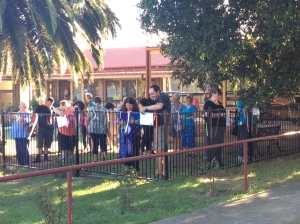
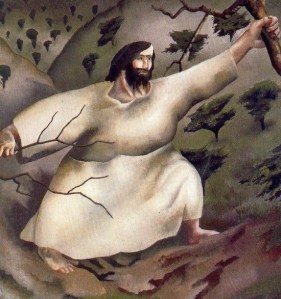
![Bethlehem. From the east, showing Shepherds Fields, figure seated - Date Created/Published: [between 1934 and 1939] - Library of Congress, Prints & Photographs Division, Matson (G. Eric and Edith) Photograph Collection - Reproduction number: LC-DIG-matpc-22258 (digital file from original photo) - Rights Advisory: No known restrictions on publication.](https://apreacherstale.files.wordpress.com/2015/12/13309-bethlehem-from-the-east-showing-shepherds-fields-figure-seated.jpg?w=300&h=204)
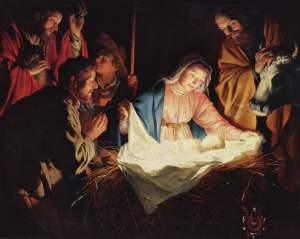

 this very famous Leonardo da Vinci painting of John the Baptist. Apart from being a very beautiful portrait, it also makes John’s purpose very clear. John is pointing beyond himself. But to what? It’s impossible to see what he’s pointing to – but in the background – probably darkened by 500 years of varnish over the paint – is the cross. It’s not just the intertwined birth narratives of these two characters that matter, or the story of their family. It’s what they direct us to – the cross.
this very famous Leonardo da Vinci painting of John the Baptist. Apart from being a very beautiful portrait, it also makes John’s purpose very clear. John is pointing beyond himself. But to what? It’s impossible to see what he’s pointing to – but in the background – probably darkened by 500 years of varnish over the paint – is the cross. It’s not just the intertwined birth narratives of these two characters that matter, or the story of their family. It’s what they direct us to – the cross.